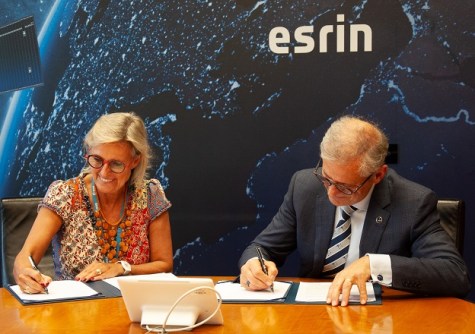
Australia’s SmartSat CRC and the European Space Agency’s (ESA) Φ-lab have signed an agreement for collaboration on Earth observation (EO) research.
The Φ-lab research centre aims to accelerate EO through technologies such as AI and satellite on-board processing.
SmartSat already has a relationship with Φ-lab, with the latter supporting development of the HyperScout imager payload that is being integrated into the SmartSat-led South Australian Kanyini satellite. That work followed consultations with Φ-lab concerning its Φ-sat-1 satellite mission.
“Our relationship with Φ-lab has been growing stronger over the past few years through our shared strategic research initiatives in the Kanyini and Φ-sat satellite missions,” said SmartSat CEO, Andy Koronios, who travelled to Rome for the signing ceremony.
“Φ-lab is at the forefront of Earth Observation technologies, and we are very proud to collaborate with them to further showcase Australian expertise on an international level.
Koronios added that SmartSat has identified new opportunities for collaboration between researchers at the Queensland University of Technology and Φ-lab to develop AI capabilities for analysis of hyperspectral satellite imagery.
“This will create the next generation of predictive intelligence that can forecast and monitor agricultural and environmental activities and disaster events with greater accuracy,” he said.
SmartSat and Φ-lab will establish an exchange program for research personnel and SmartSat PhD students to undertake internships at Φ-lab. The internship program is expected to commence in early 2024 for PhD students specialising in on-board AI and synthetic aperture radar.
“With ESA Φ-lab as the lead on our side in conjunction with SmartSat’s broad-based consortium, the collaboration will undoubtedly yield significant results in the areas of onboard AI and edge computing in space,” said Simonetta Cheli, ESA Director of Earth Observation Programmes.
“The exchange program will also be an excellent chance for European and Australian researchers to optimise knowledge sharing in this field, and I look forward to seeing the fruits of their endeavours.”







